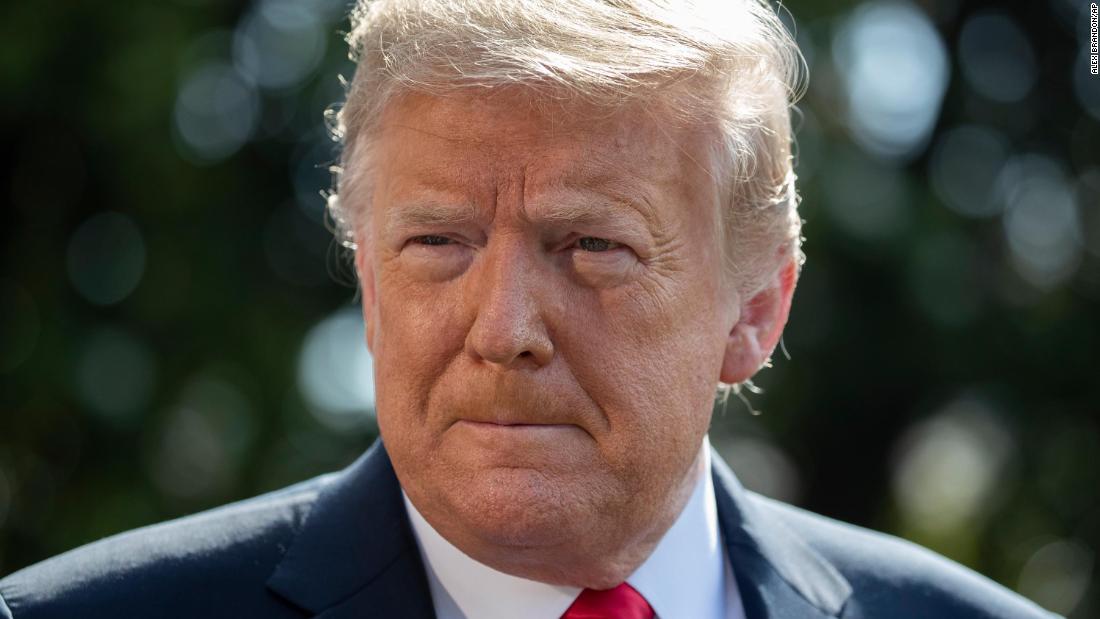Intelligence on Russian bounty plot was included in the President’s Daily Brief earlier this year, source says
Trump is not known to fully or regularly read the President’s Daily Brief, something that is well-known within the White House. He is instead orally briefed two or three times a week by his intelligence officials. The White House maintains he was not briefed about this in the oral session.
The information was serious enough the National Security Council staff held a meeting during the spring to discuss “possible response options,” including sanctions, if the intelligence developed to the point it was deemed ready to take to the President for any possible action, the official said.
Pressed on Monday whether the information was included in the President’s Daily Brief — the written document that includes the intelligence community’s more important and urgent information — White House press secretary Kayleigh McEnany said only that Trump “was not personally briefed.”
Trump also claimed in a Sunday evening tweet, “Intel just reported to me that they did not find this info credible, and therefore did not report it to me or @VP.”
The US intelligence community and military are investigating to see if there is further corroboration, and if the National Security Council staff can recommend response options. The source said the White House is now claiming the leak will ruin the opportunity to get a real answer.
There is “no consensus within the intelligence community” about whether Russia offered to pay bounties to the Taliban for killing American troops, McEnany said. There is “dissent” within the intelligence community about the intelligence, which she insisted had not reached Trump’s desk because “it wasn’t verified.”
The source tells CNN that intelligence of this nature with risk to US troops should be assumed to be true until you know otherwise.
The cascade of developments around the Russian effort have prompted a bipartisan group of congressional leaders to demand that the Trump administration explain what it knew and when.
The White House briefed a group of House Republican lawmakers on the matter on Monday, while Speaker Nancy Pelosi and Senate Minority Leader Chuck Schumer called on Director of National Intelligence John Ratcliffe and CIA Director Gina Haspel to provide all-member briefings to Congress on the intelligence.
One of those House Republicans, Rep. Michael McCaul, a Texan who is the top Republican on the House Foreign Affairs Committee, told CNN that he had learned in the briefing that dissenting views among agencies within the intelligence community is the reason why the intelligence was not briefed to Trump.
“While there was a stream of reporting on this alleged bounty issue, intelligence from one agency, there was another agency with a very strong dissenting view on this intelligence,” McCaul said.
“When that happens, typically, the national security adviser goes back through the NSC and tries to vet this to get to a point where it can be actionable. They don’t want to throw intelligence in front of the President when there’s basically a dissent within the community itself,” he added.
McCaul said officials said that the top officials in the Trump White House were attempting to resolve the diverging views when news of the Russian effort broke.
Ratcliffe said in a statement later on Monday that a leak of intelligence “places our forces at risk” and is a crime.
“The selective leaking of any classified information disrupts the vital interagency work to collect, assess, and mitigate threats and places our forces at risk. It is also, simply put, a crime,” Ratcliffe said. “We are still investigating the alleged intelligence referenced in recent media reporting and we will brief the President and Congressional leaders at the appropriate time. This is the analytic process working the way it should. Unfortunately, unauthorized disclosures now jeopardize our ability to ever find out the full story with respect to these allegations.”
CIA Director Gina Haspel also released a statement on Monday, saying, “Leaks compromise and disrupt the critical interagency work to collect, assess, and ascribe culpability.”
She added, “CIA will continue to pursue every lead; analyze the information we collect with critical, objective eyes; and brief reliable intelligence to protect U.S. forces deployed around the world.”
Several key Senate Republicans said they are seeking more information from the Trump administration.
House Intelligence Chairman Adam Schiff, a California Democrat, told CNN’s Jim Acosta Monday that the White House explanation that Trump wasn’t briefed because of conflicting intelligence wasn’t sufficient.
“It is frequently the case that the President should be briefed on matters where there is no absolute certainly about the intelligence on a given topic,” Schiff said.
“It’s not sufficient to say we didn’t tell him because we couldn’t dot every I, cross every T, prove every point. … If it goes to the protection of our troops, that’s something that needs to be briefed to the commander in chief.”
There have been more than 2,400 total deaths of US service members since the start of America’s longest war in 2001. Last year was the deadliest in five years for the US in Afghanistan, with 23 service members killed during operations in the country in 2019.
This story has been updated with additional information Monday.
CNN’s Kaitlan Collins, Ryan Browne, Jeremy Herb, Lauren Fox and Zachary Cohen contributed to this report.
![]()


